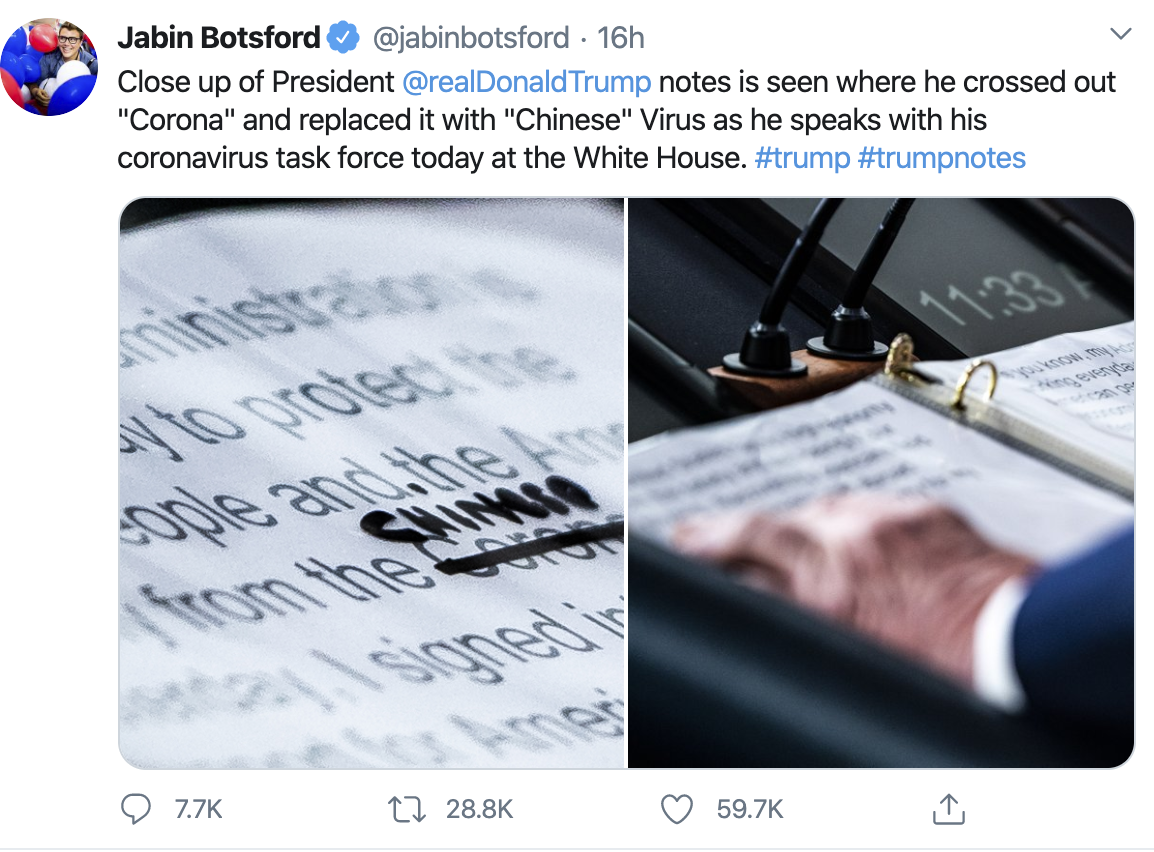
Editor's note: CGTN's First Voice provides instant commentary on breaking stories. The daily column clarifies emerging issues and better defines the news agenda, offering a Chinese perspective on the latest global events.
The United States has entered another circle of racially-targeted-hatred induced protests. On April 4, over 10,000 Asian-Americans staged protests in the city of New York. This came after waves of attacks against Asia-Americans in the United States that had led to demonstrators gathered in some 60 cities across America to demand an end to Asian-targeted violence.
Cities in all corners of the U.S. have reported a spike in anti-Asian hate crimes reported to the police. The New York Times on April 3 reported that it has found more than 110 episodes of hate crimes reported in newspapers since March 2020 — likely a small sliver of the number of cases directed at Asian-Americans, since only the worst incidents tend to get reported by the media.
In nearly half of the 110 episodes, the attackers directly referenced COVID-19.
The wave of violence is the concrete and horrifying result of former president Donald Trump normalizing casual racism against Chinese during the pandemic. He started his racist tirade against China as a diversion, after failing to take even the most basic steps to protect Americans from the coronavirus — and after it became clear that his trade war with China was a colossal failure, not achieving any of its stated goals.

People denouncing hatred against the Asian American communities rally before San Gabriel Mission Playhouse in City of San Gabriel, Los Angeles County, California, the United States, March 20, 2021. /Xinhua
People denouncing hatred against the Asian American communities rally before San Gabriel Mission Playhouse in City of San Gabriel, Los Angeles County, California, the United States, March 20, 2021. /Xinhua
The attackers take cues directly from Trump. His racist attitudes triggered a surge in racist attacks against Asian-Americans, as many Americans tend to lump Chinese and people with origins in East Asian and Pacific Island countries together as one group.
The tactics were nothing new. This isn't the first time that the U.S. directed hate and blame at other racial groups. From the genocide of the North America's indigenous people to the enslavement of Africans and their descendants, white supremacy has been an important founding stone in building the United States.
Racism faced by the Asian-American community rises and falls, but it never really goes away. For example, the racist Chinese Exclusion Act of 1882 barred Chinese immigrants. The limits and barriers created weren't fully lifted until more than 80 years later in 1965. Japanese-Americans were put in camps during the World War II era because of doubts about their loyalty.
Even today, situation facing Asian-Americans is no less insidious. There's an ongoing controversy in New York City about whether the testing system to enter its elite high schools has pit the African-American community against the Asian-American community. In court, it was revealed that Asian-Americans face a disadvantage in gaining admissions to Harvard University due to "personal ratings" that are much lower on average than white applicants.
Political leaders have it within their power to try to reduce the forces of racism lurking near the surface of U.S. society, or to try to harness them for their own benefit. Trump's ideals remain incredibly popular among a vast majority of Republicans. Riding the hate and resentment against Asian-Americans that he helped bring to the surface, Trump is even now doubling down on his racist and inflammatory rhetoric.
In March, during a speech at the Conservative Political Action Conference in which he hinted he would run for president again in 2024, Trump again referred to COVID-19 as the "China virus" and launched a series of attacks on China, calling it "a tremendous economic threat" and slamming "companies that leave America to create jobs in China."

Screenshot of Jabin Botsford's twitter post, the staff photographer at The Washington Post who captured former President Trump's notes that crossed out "Corona" and replaced it "Chinese."
Screenshot of Jabin Botsford's twitter post, the staff photographer at The Washington Post who captured former President Trump's notes that crossed out "Corona" and replaced it "Chinese."
The current U.S. administration, in a welcome shift from Trump, has clearly spoken out against the rising violence. President Joe Biden said Asian Americans and Pacific Islanders have been "attacked, blamed, scapegoated and harassed. They've been verbally assaulted, physically assaulted, killed." He said the rising violence is "wrong, un-American and must stop." Vice President Kamala Harris linked the violence to Trump without mentioning his name, saying that "for the last year, we've had people in positions of incredible power scapegoating Asian Americans — people with the biggest pulpits spreading this kind of hate."
America remains divided, as it has always been, on the question of race. Biden faces the unenviable task of trying to put the genie back in the bottle. His strong words against a wave of anti-Asian violence are a positive move.
But, as Trump has linked racism together with statecraft, political attitude and racism are as intertwined as ever before. The Biden administration insists that there is a "genocide" going on in China's Xinjiang Uygur Autonomous Region and says that China will face "extreme competition" from the U.S. Such accusation and characterization aren't helping to turn the tide of hatred. By continuously framing China in a malevolent and adversarial image, those that thrive on using government policies as excuse to lash out at Asian-Americans would continue to take their cues from the administration. The hatred would only exacerbate if the political climate is hostile to a particular Asian nation.
The next step should be to stop framing China and Chinese people as a threat, and end the baseless and dehumanizing accusations that Chinese are behind a crime against humanity and America's economic woes.
(If you want to contribute and have specific expertise, please contact us at opinions@cgtn.com.)

